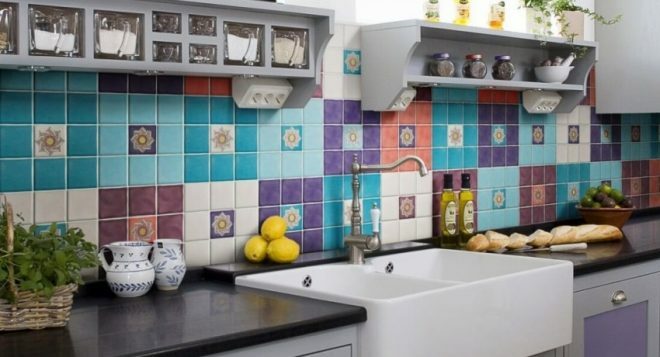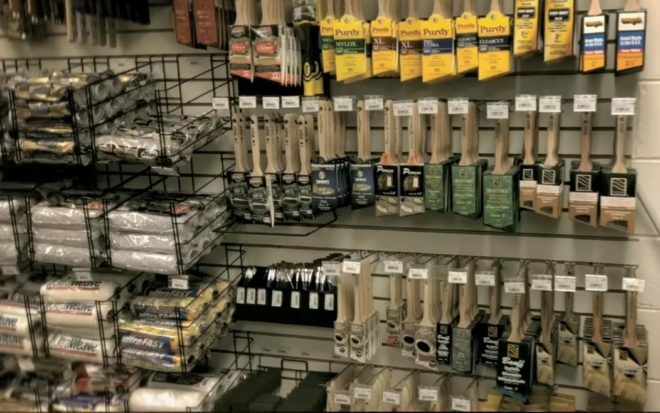Regardless of the structure - the floor needs high-quality refinement, and many floor coverings have been invented for this. The leading place in market abundance in this regard is the laminate.

Content:
- What to choose for a concrete floor? ↓
- Polyethylene foam ↓
- Polystyrene ↓
- Cork ↓
- Fiberglass ↓
- Styling technology ↓
- Price of material and cost of work ↓
Due to its unique properties, it is in demand in almost all rooms of the premises, regardless of cross-country ability. Nevertheless, the laying material needs a certain installation procedure and preparatory work. The main nuance at laminate flooringis the presence of a special multifunctional substrate.
Flooring underlay - This is a special thin material that prevents the deflection of the laminate, the removal of unnecessary noise and has several other advantages. Without it, styling is impossible.
the substrate can be produced both in roll and in sheet form - it depends on the initial raw material.
Raw materials for the manufacture can be of natural and artificial origin. In total, the substrate was invented as an intermediate layer between the floor and the floor.
Functions:
- Soundproofing. All types of materials contribute to the absorption of excessive noise that appears from walking on the surface of the laminate.
- Thermal conductivity. Substrates are good heat exchangers, which allows their use in the construction of underfloor heating systems.
- Floor leveling. Using the substrate, you can even out small irregularities in the wood or concrete floor. The air space between the base and the coating from 1 to 4 mm is easily replaced by the substrate, and contribute to alignment, while achieving a horizontal zero mark. In case of revealing large gaps - it is necessary to level the floor with a layer of screed (a layer of adhesive or self-leveling mixture).
- Waterproofing. Condensation can build up between the floor and the laminate (various factors), which can lead to mold, and to avoid this, it is necessary to use a substrate with foil or foam polyethylene.
What to choose for a concrete floor?
Concrete floor is one of the bases that are able to retain moisture and often are not perfectly smooth. And when choosing a substrate for a laminate, it is necessary to take into account many factors, and also not to forget that various materials have their own individual technical characteristics and price category.
You can acquire a certain type only after familiarizing yourself with all the nuances of each of them.
Types and descriptions of suitable substrates:
Polyethylene foam

It is one of the most popular types among consumers.primarily due to its low cost. It is produced in three versions - physically cross-linked, non-cross-linked and chemically cross-linked foamed polyethylene. The first option is the most durable during the operation of the substrate, and the rest are slightly inferior to it in durability.
Advantages of the material:
- Low cost.
- Prevents the occurrence of fungal formations.
- High level of heat and sound insulation.
- Durability.
- Easy installation.
- Excellent waterproofing performance.
Some disadvantages
- In case of fire, the substrate is capable of releasing toxic substances.
- Insufficient strength (torn).
- Under the influence of a constant load from heavy objects - cakes.
Polystyrene

This type of lining material is characterized as more durable than a polyethylene substrate. Its main components are expanded polystyrene and a layer of aluminum foil.
Material Advantages:
- Average price.
- The surface does not react with other building materials.
- Thanks to a foil - does not pass moisture.
- It is a heat-conducting material.
- It does not contribute to the formation of mold and the propagation of fungal microorganisms.
- Long service life.
- Noise-insulating properties.
- Ecologicaly clean.
- Easy styling.
Some nuances:
- The substrate is more often produced in sheets, when laying, which require some knowledge.
- Installation takes a long time.
Cork

This material is a natural product, made from crushed oak bark. It is available in two versions - roll and tiled. During the production process, not a single chemical reagent is added to the material, which allows us to talk about its environmental cleanliness.
Advantages of the substrate:
- Does not lose its original thickness when exposed to heavy objects.
- Do not crumple.
- Absorbs noise perfectly.
- Good shock absorber.
- Durability.
Disadvantages:
- High price.
- Complex styling process.
- Exposure to moisture. In the standard form, the substrate is not recommended for laying in rooms with a high moisture content (bath, toilet, kitchen), because after a while it can swell and damage accordingly laminate. If you wish, it is better to buy a cork substrate with the addition of bitumen.
Fiberglass

A reliable option as a false material laid on a concrete floor is a fiberglass backing. It is quite dense and elastic, does not pass moisture at all and has excellent sound-absorbing and heat-insulating characteristics.
With a long service life, it prevents the occurrence of harmful formations and has no special comments, except for the price per square meter of material.
Styling technology
 The process of laying any type of substrate practically does not require special knowledge and physical effort, but it requires compliance with certain rules, endurance and accuracy from the employee.
The process of laying any type of substrate practically does not require special knowledge and physical effort, but it requires compliance with certain rules, endurance and accuracy from the employee.
Necessary materials and tools:
- substrate;
- a construction knife or scissors;
- Scotch;
- sealant or bitumen mastic;
- tape measure, ruler, marker;
- deep penetration primer and wide brush;
Before starting laying the substrate, it is necessary to check the cleanliness of the concrete screed, because the smallest pebbles or other rubbish will appear after laying the laminate (creaking and crackling made from under the coating). After thorough cleaning - the entire surface of the floor must be opened at least twice with a primer and allowed to dry completely. This period varies from 1 to 5 days depending on the temperature in the room.
Detailed walkthrough:
- After preparatory work on the concrete floor - you can start laying the substrate. To begin with, the rolled material is rolled across the floor and trimmed with a knife to fit the size of the room. If a tiled substrate is used, the first line is laid out and one of the tiles is trimmed.
- Further, it is recommended to randomly apply several strips of sealant on the floor, which will quickly adhere the substrate to the floor.
- On top of the sealant, the substrate gradually spreads out and is carefully smoothed to avoid a wavy effect.
- The next strip implies the same actions. Strips of material should fit snugly together. Adhesive tape is glued to the joint of the strips in order to increase the level of heat and sound insulation. It also contributes to waterproofing.
- The laying of subsequent strips or tile forms of the substrate is identical to the previous ones.
- After going through the entire process of laying the substrate - you can proceed to the installation of the laminate.
If the substrate is laid on an incompletely dried screed or it itself does not have waterproofing abilities, it is necessary to put a 0.2-0.3 mm thick plastic film under it.
Price of material and cost of work

- Foamed polyethylene substrate costs from 60 rubles. for 1 m² and higher.
- Polystyrene foam substrate costs from 90 rubles. for 1m².
- The cost of a fiberglass backing is within 100 rubles. for 1m².
- Natural cork substrate has a significant price - at least 120 rubles. for 1m².
Each construction organization has its own tariffs for the work performed and of course there is no single fixed price, but on average for laying 1 m² - 50-70% of the initial cost of the material is taken. If you carry out the work in person, the work will be much cheaper.
The calculation of the material is quite simple - what is the area of the room - the same amount of lining material is needed. But many experts recommend adding another 10% to this figure as a consumable (trimming by corners or bends).


